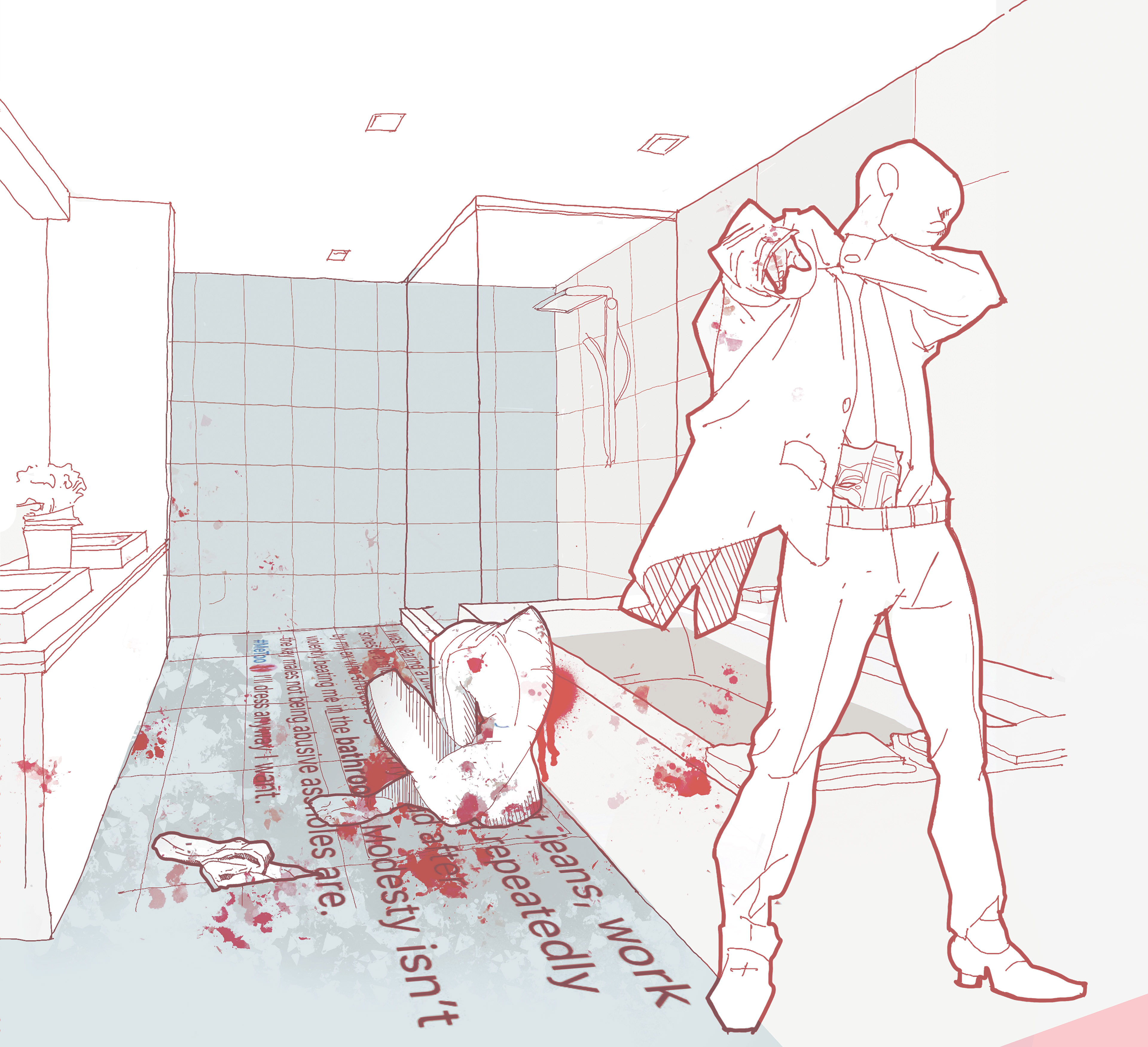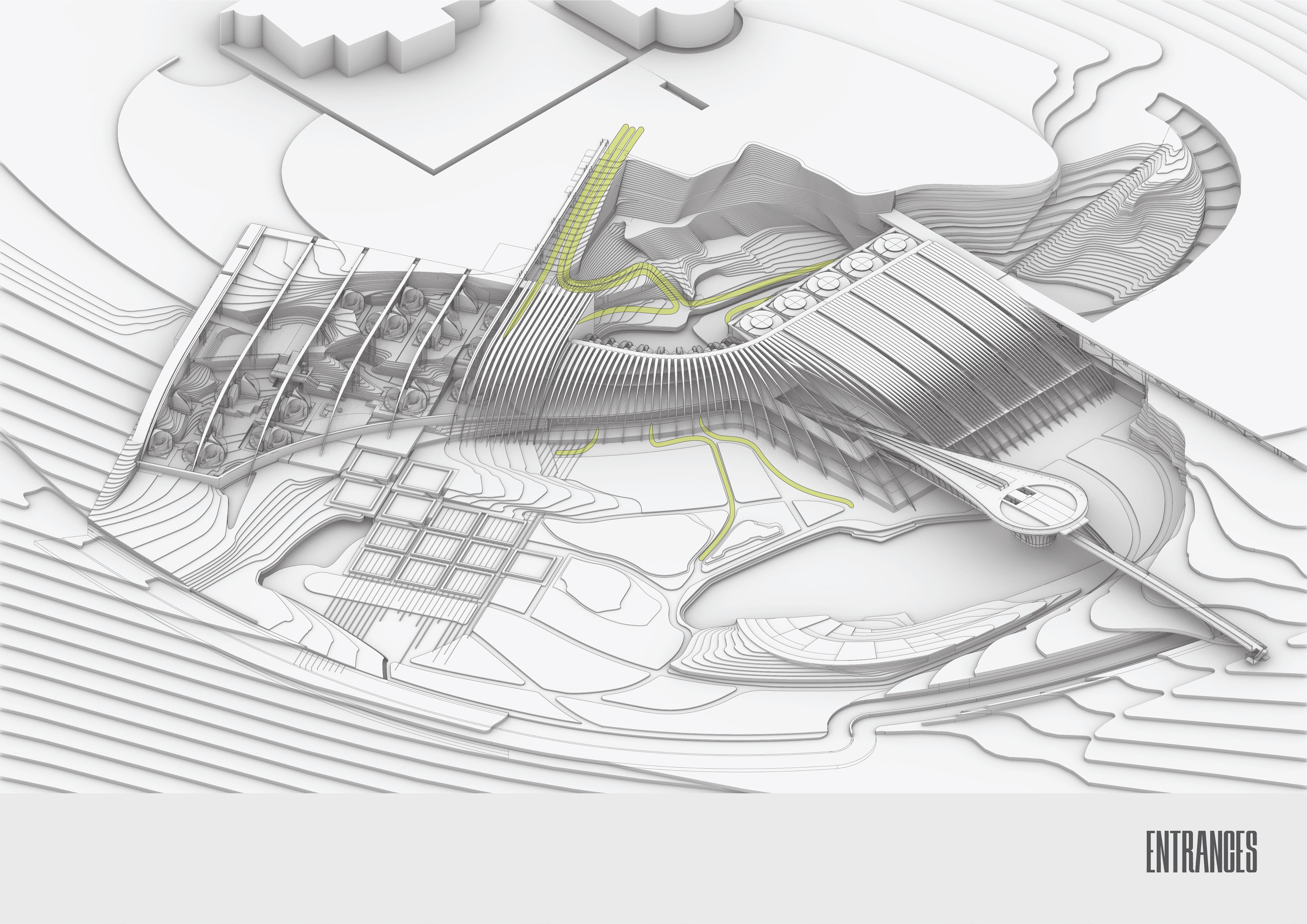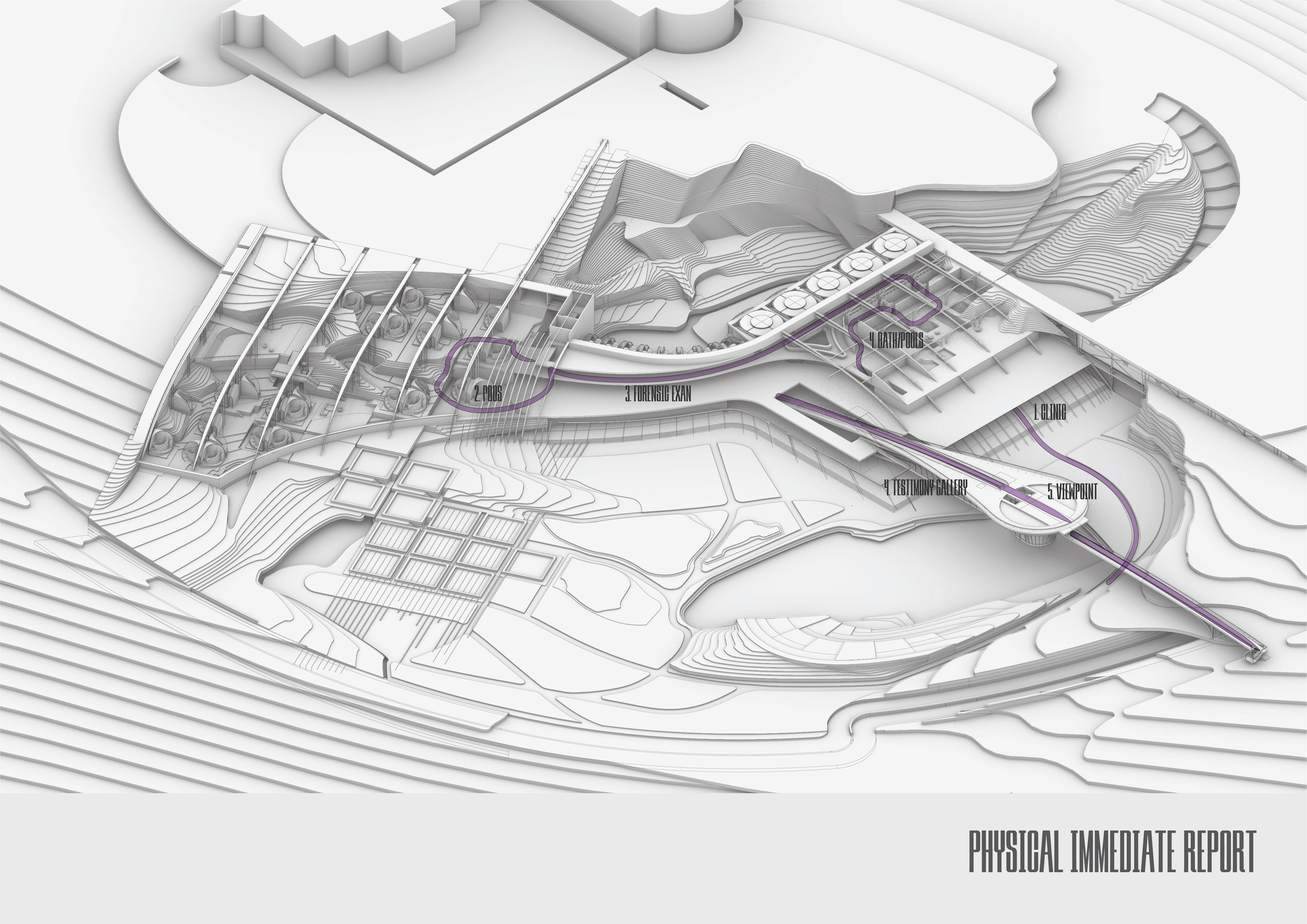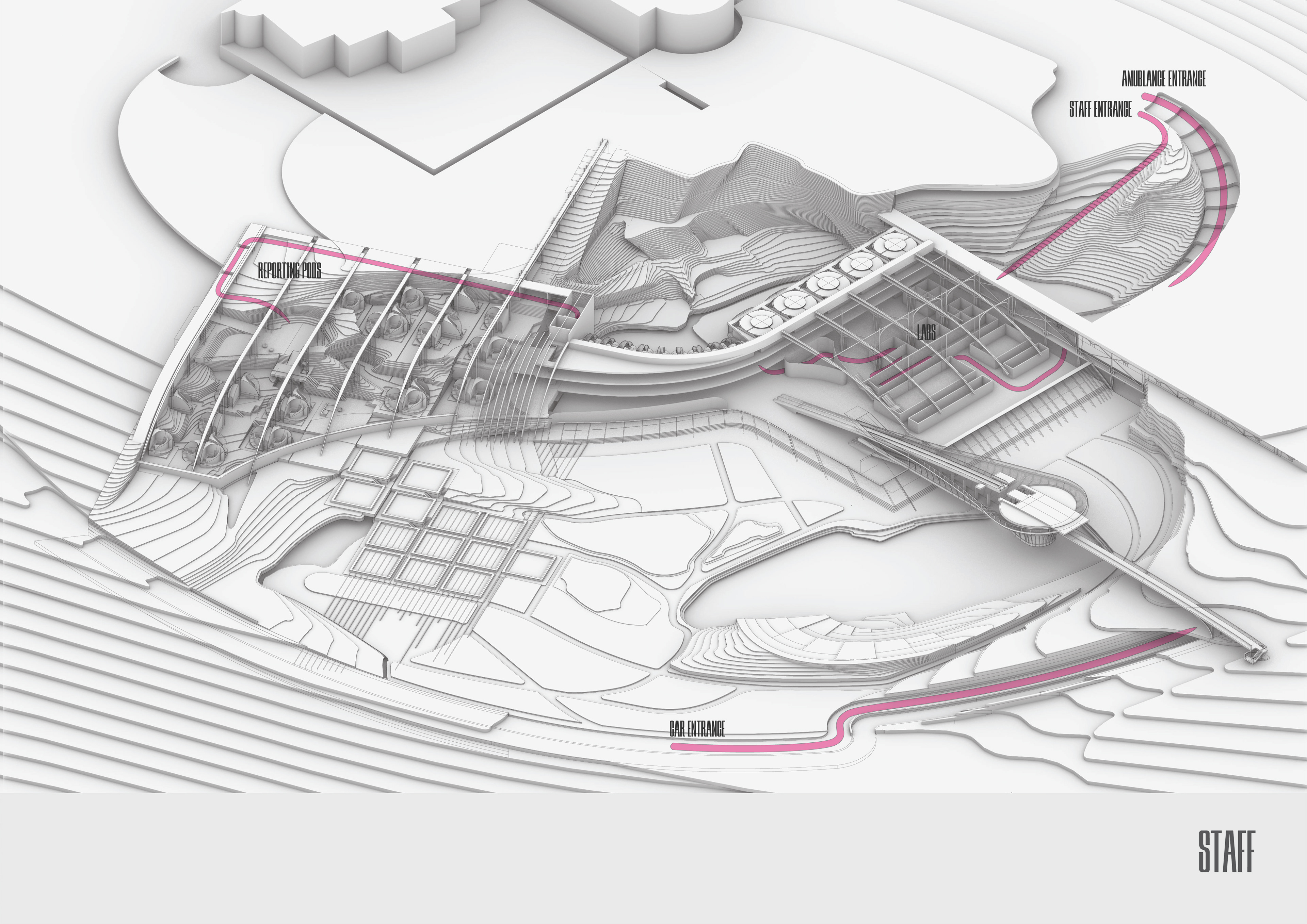
Do spaces influence the way we behave? When a victim of gender violence courageously tells his/hers story, they often describe the space it happened in. Was it dark? Was is closed? Was it a hotel? An office? The street? Their own house? Not only the way, buy the default layout, distribution and design of our spaces might be having a say on how we behave within them, and they might be contributing to violence and harassment. The project evaluates the relationship between physical space and human behavior, the relevance of the context, and questions whether there is a connection between both. As architects, can we do something about it?
The #metoo movement has grown up and started to gain global momentum, and in 2 years the number of posts increased to nineteen million.
By analyzing the tweets we found the connection between environment and event. When victims tell their stories , they usually describe or mention the place it happened in.
Analysis of tweets from the #meToo movement, in order to understand which places are mentioned the most when telling abuse, harassment and rape testimonies.
Most mentioned spaces are workspace, domestic and hotel rooms.
These were taken as case studies in order to understand the relation between space and violence.
TESTIMONY.
Taken from pseudonym “Hodaya”, about her Rabbi:
"..He took me to the Hilton, we where there for 3 days actually. The first thing that he wanted was for me not to wear religious clothes, he didn ́t want to be with me like that in public, so he sent me to the souvenir shop to buy shorts and sleeveless shirts. It felt to me almost like being naked. At night, when we were at the hotel room, I didn’t really know how to get out of that situation and I thought to myself “maybe we’ll watch a movie and in the meantime I’ll fall asleep.” But then he actually put a porn movie..And then started to talk about it and ask me questions. “Which one is prettier? the blonde one or the black one?” and these sort of comments and I asked him to stop. And then he sent me to bathroom to take a shower. He didn’t rape me, but he did a lot of different things to me. I just understood that everything he said I had to do. He kept making me feel as if I owed him my life. At one point I tried to take him off of me and I told him “I’m falling asleep, I’m tired”..In the morning I told him I felt discomfort in my intimate area and he responded “Oh, that ́s because you had an orgasm”. I actually didn’t know what that meant. It took me some time to understand what happened there.."
"..He took me to the Hilton, we where there for 3 days actually. The first thing that he wanted was for me not to wear religious clothes, he didn ́t want to be with me like that in public, so he sent me to the souvenir shop to buy shorts and sleeveless shirts. It felt to me almost like being naked. At night, when we were at the hotel room, I didn’t really know how to get out of that situation and I thought to myself “maybe we’ll watch a movie and in the meantime I’ll fall asleep.” But then he actually put a porn movie..And then started to talk about it and ask me questions. “Which one is prettier? the blonde one or the black one?” and these sort of comments and I asked him to stop. And then he sent me to bathroom to take a shower. He didn’t rape me, but he did a lot of different things to me. I just understood that everything he said I had to do. He kept making me feel as if I owed him my life. At one point I tried to take him off of me and I told him “I’m falling asleep, I’m tired”..In the morning I told him I felt discomfort in my intimate area and he responded “Oh, that ́s because you had an orgasm”. I actually didn’t know what that meant. It took me some time to understand what happened there.."
TESTIMONY of the victim, Judgement:
"..As for the fourth charge, this is my position: In early 2018, after an afternoon of entertainment with my daughter, we got back to the house at late hours. He wasn’t happy with the time we arrived and the argument started. He took me to the room, grabbed me strongly, paralyzed me against the bed and when he was on top of me, he hit me in the stomach. He even told me he didn’t cared to be locked up in prison just so someone would mourn my death. I hid in the closet. In the bathroom, but he kept coming after me. I feared that she would be exposed to this kind of violence and I even feared he would hurt her. I didn’t want for her to listen how he cursed me, all the death threats I received from him so I would try to put her to sleep early. The girl started to ask questions, why was he doing that, whether I was hurt and if I wanted her to put me a bandaid for the pain to go away. How could I protect my daughter? her little eyes that saw the terrified look of her mom, she saw the fear, pain and helplessness in my eyes, she saw how I fell silent because of him. She would see how he hurt me and listen to me crying and twisting from pain. He controlled me with fear and would tell me that he’d choose when to stop and let me go...”
"..As for the fourth charge, this is my position: In early 2018, after an afternoon of entertainment with my daughter, we got back to the house at late hours. He wasn’t happy with the time we arrived and the argument started. He took me to the room, grabbed me strongly, paralyzed me against the bed and when he was on top of me, he hit me in the stomach. He even told me he didn’t cared to be locked up in prison just so someone would mourn my death. I hid in the closet. In the bathroom, but he kept coming after me. I feared that she would be exposed to this kind of violence and I even feared he would hurt her. I didn’t want for her to listen how he cursed me, all the death threats I received from him so I would try to put her to sleep early. The girl started to ask questions, why was he doing that, whether I was hurt and if I wanted her to put me a bandaid for the pain to go away. How could I protect my daughter? her little eyes that saw the terrified look of her mom, she saw the fear, pain and helplessness in my eyes, she saw how I fell silent because of him. She would see how he hurt me and listen to me crying and twisting from pain. He controlled me with fear and would tell me that he’d choose when to stop and let me go...”
TESTIMONY. Taken from the sentence of the case “Moshe Katzav vs. the State of Israel”:
“..At the end of the event in the park, Katzav told me that he had forgotten something in “Beit Hatextile” in Tel Aviv and asked me to accompany him. I agreed to the request and the two of us went to the Tel Aviv office. I did not remember how we came from the park to the Tel Aviv office. When we entered the bureau, I grabbed a chair and sat on the seat and Katzav sat down as well and without saying a word, touched my breasts in a way of intending to have sex with me, contrary to my wishes. Katzav also tried to take off my pants, but I resisted and pulled them back to my waist. I did not remember how I reached the floor, but he forcibly started to take down my pants and undressed me, although I tried unsuccessfully to prevent it. He had not completely removed them, since I remembered that I did not have to look for my pants and underwear on the side after the act. He opened his pants and laid above me, while the weight of his body and grip limited my options to escape. I struggled and pointed out that I was not interested and even tried to resist him with my body. At some point, I sensed his penis when he penetrated me...I felt helpless to get rid him from me, but to no avail. Katzav was aware that I was not willing to have sex with him, but only when I continued to express my opposition, physically and verbally, he ceased his actions before he reached climax. I cannot recall exactly how long we stayed in the office, but I calculated it was between 10-15 minutes...”
“..At the end of the event in the park, Katzav told me that he had forgotten something in “Beit Hatextile” in Tel Aviv and asked me to accompany him. I agreed to the request and the two of us went to the Tel Aviv office. I did not remember how we came from the park to the Tel Aviv office. When we entered the bureau, I grabbed a chair and sat on the seat and Katzav sat down as well and without saying a word, touched my breasts in a way of intending to have sex with me, contrary to my wishes. Katzav also tried to take off my pants, but I resisted and pulled them back to my waist. I did not remember how I reached the floor, but he forcibly started to take down my pants and undressed me, although I tried unsuccessfully to prevent it. He had not completely removed them, since I remembered that I did not have to look for my pants and underwear on the side after the act. He opened his pants and laid above me, while the weight of his body and grip limited my options to escape. I struggled and pointed out that I was not interested and even tried to resist him with my body. At some point, I sensed his penis when he penetrated me...I felt helpless to get rid him from me, but to no avail. Katzav was aware that I was not willing to have sex with him, but only when I continued to express my opposition, physically and verbally, he ceased his actions before he reached climax. I cannot recall exactly how long we stayed in the office, but I calculated it was between 10-15 minutes...”
The Manifesto: De-contextualization of events.
Does the context and the space play a role on the turnout of events?
The following images present a reconstruction of victim’s cases through their testimonies and descriptions of the space, in order to understand its role and the relevance of the context and the space it happened in.
Within out scope of influence as architects, we chose to focus out proposal in dealing with the Top-Down side of spectrum : The bureaucratic process the legislative power currently has to offer.
By centralizing all of these programs in one place, we can save time, capture the incident in real time, and make it more in psychological way than formal.
1st station:
There is only 6% percent of victims per day report to the police-It's only 2 peoples.
We planned 38 pods to give a response to all the victims in the same time.
The propose to give the psychological treatment in order to collect the first data.
In addition to pods you can see here some open spaces to supporting circles (like yoga or public talk)
The building has several non-main entrances to protect the privacy of victim.
2nd station:
Rape Kit. The victim’s body is a part of the crime scene. A doctor/nurse photographs, swabs and conducts an invasive and exhaustive examination of the victim’s entire body for DNA evidence left behind by the attacker.
3rd station:
Preceding incidents demonstrated that tested rape kits end up in storage, unopened and neglected. Instead of continuing the persecution process, they just become another statistic.
Due to lack of a penitentiary system, the persecution of such cases are closed without indictment. The persecution process finishes before it even begins.
Due to lack of a penitentiary system, the persecution of such cases are closed without indictment. The persecution process finishes before it even begins.
View of the data LAB from the backyard:
4th station:
Today's existing option is so apathetic, distant, cold and impersonal.
5th station:




